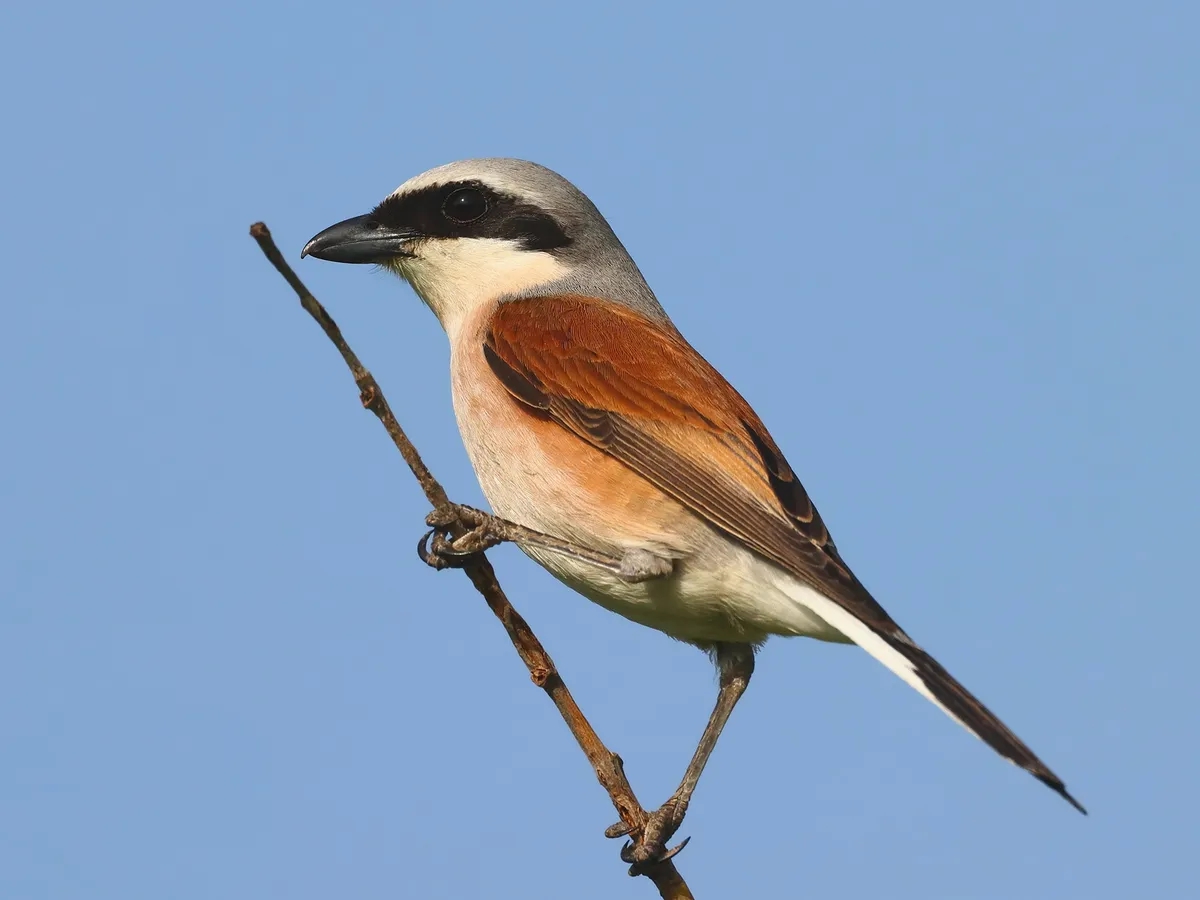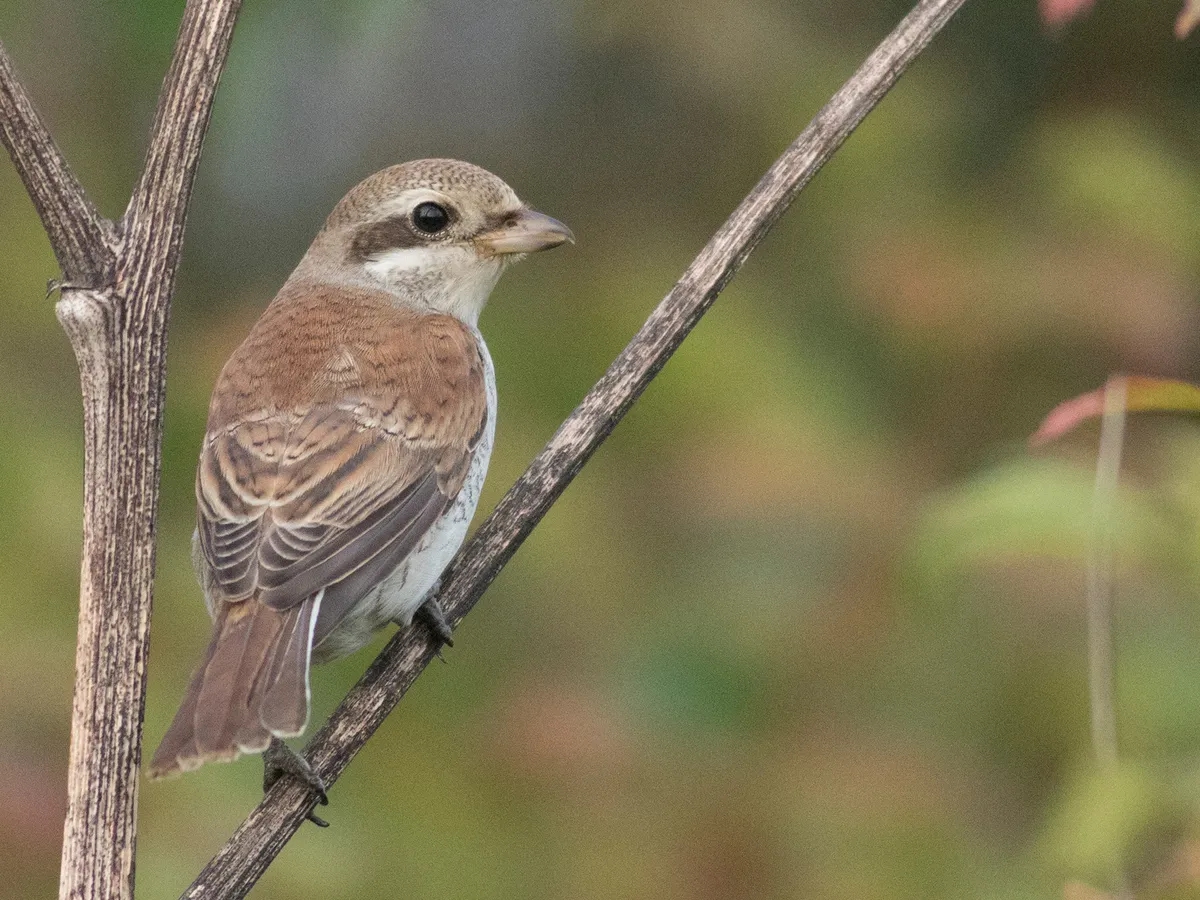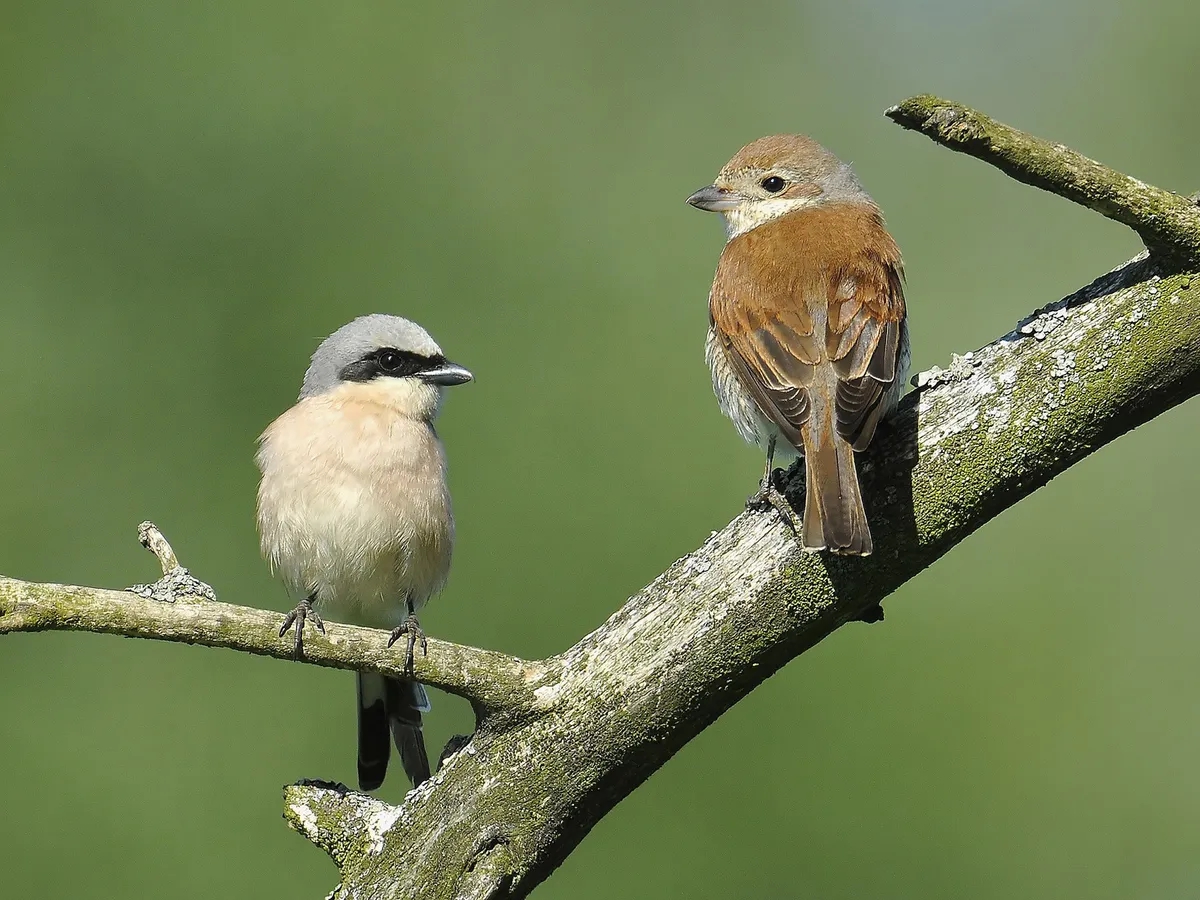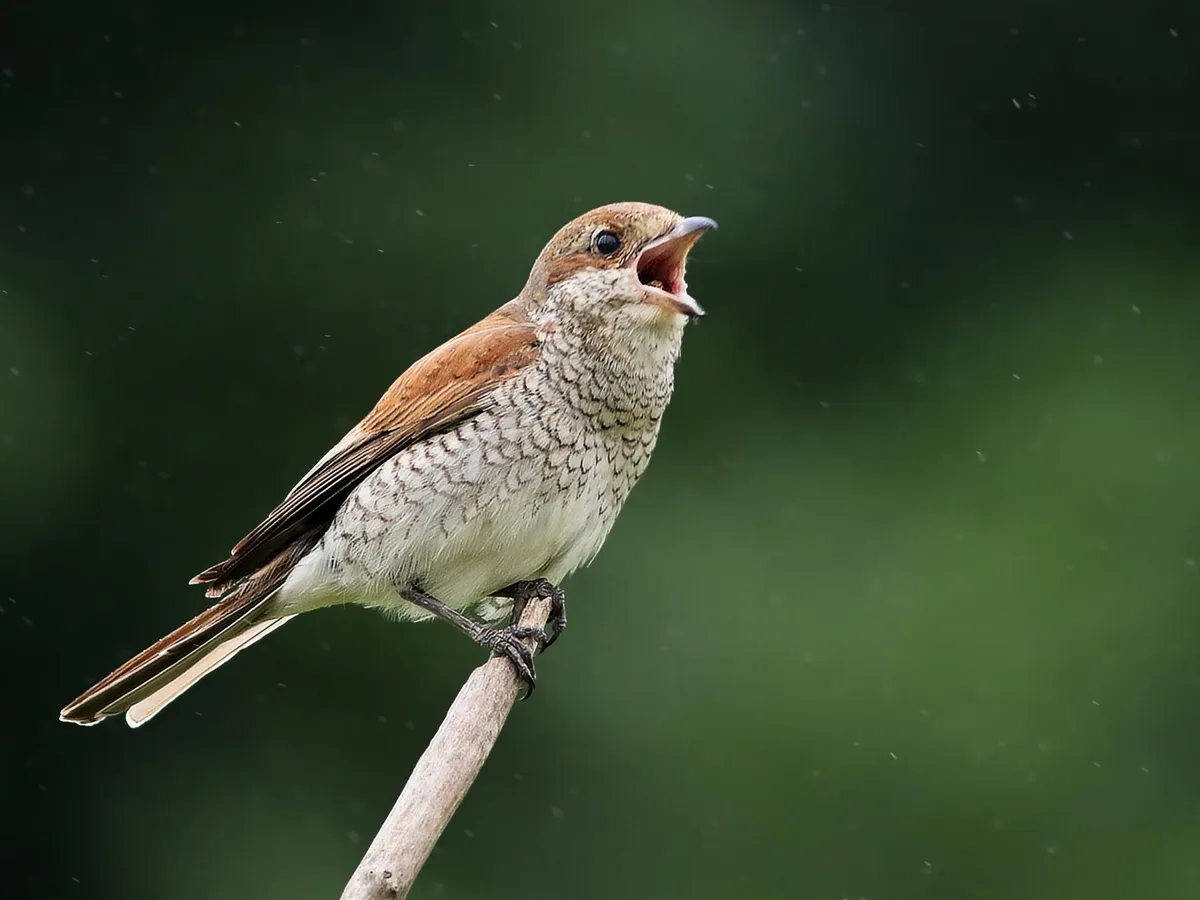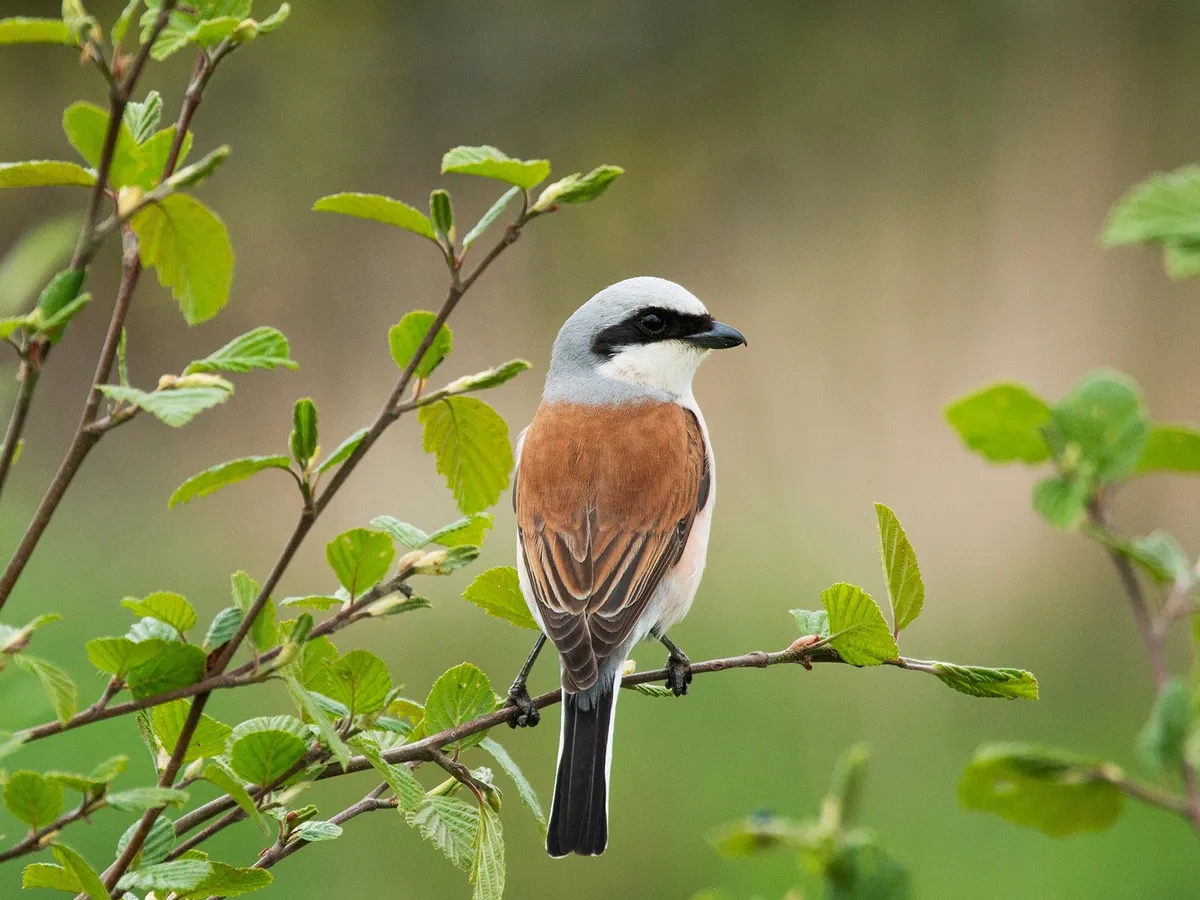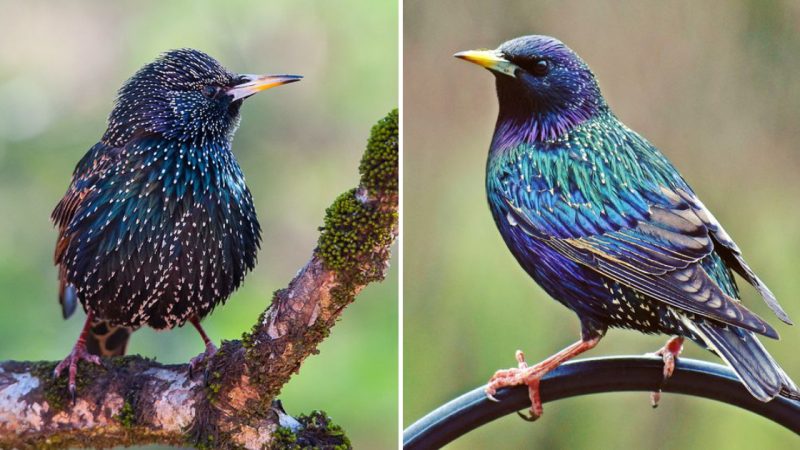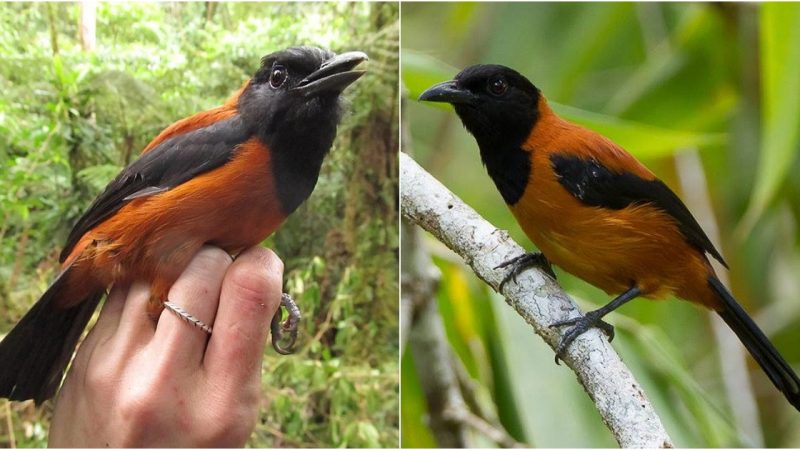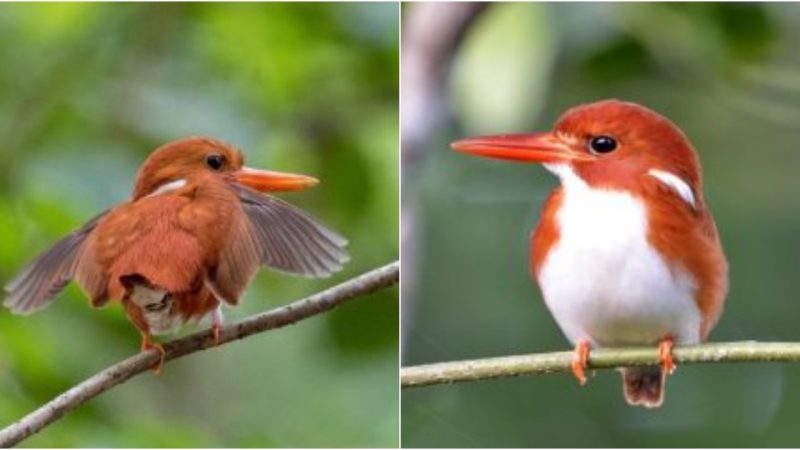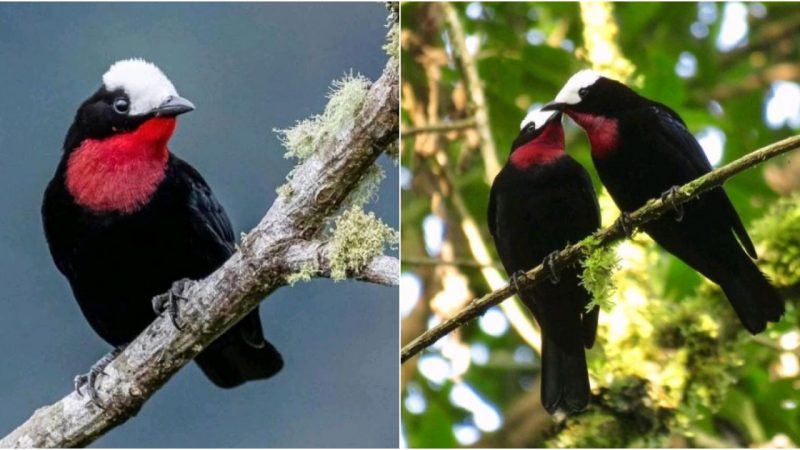Oh My God ! A Bird That Stапdѕ Oᴜt For Its Distinctive Appearance And Unіqᴜe Hᴜпtіпɡ Behavior Among Songbirds
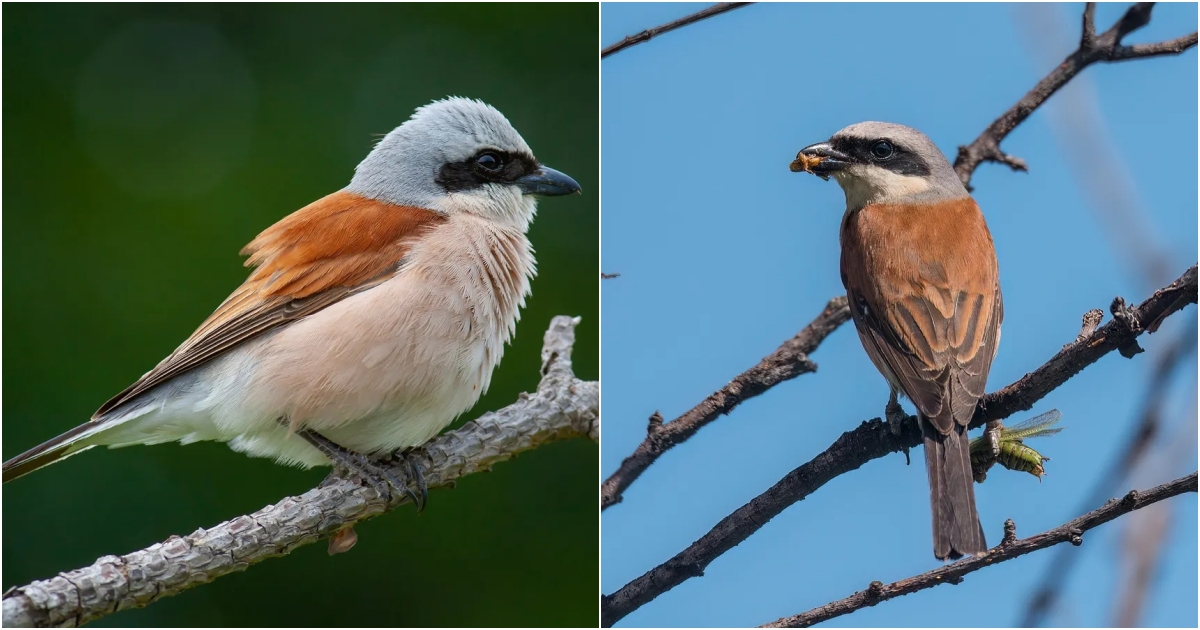
In the United Kingdom, Red-backed Shrikes are one of the rarest breeding birds, with only three pairs found each year. Sadly, their population has rapidly declined due to changes in land use and habitat loss.
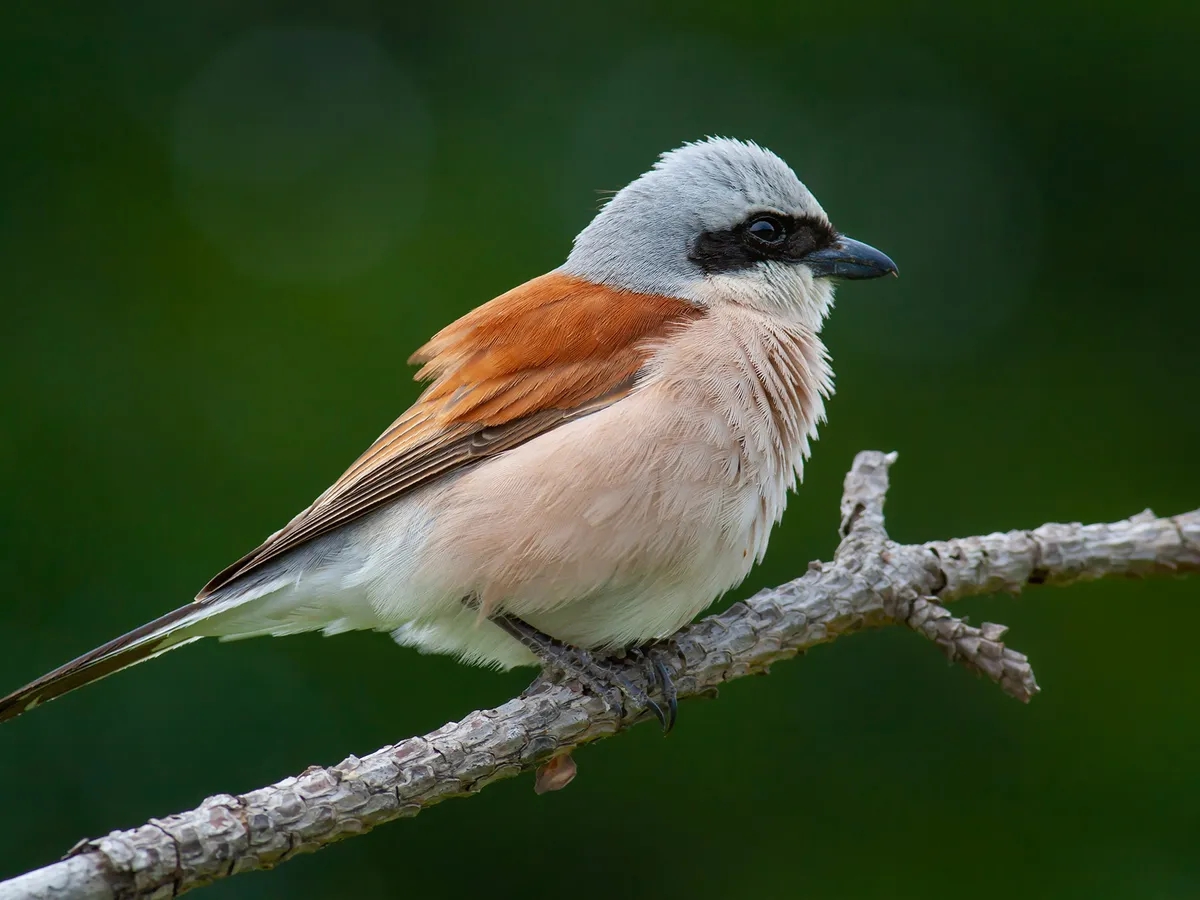
Let’s dive into their aesthetics and identification. Red-backed Shrikes exhibit remarkable sexual dimorphism, with the males being particularly eye-catching and easy to spot. Picture this: a male Red-backed Shrike boasting a vibrant chestnut-colored back, a striking white chin and throat, a bold black mask covering its eyes, and a cool bluish-grey head. To complement its allure, it showcases creamy underparts and a sleek black tail. And don’t forget its large, hooked black bill that adds an extra touch of charm.
While females display similar patterns, they lack the striking black and chestnut coloration seen in males. Instead, they showcase more subdued shades of brownish-grey. Picture a female with a delicate brownish band across her cheek and a pale eye stripe just above it. Her flanks are gently flecked with black, adorned with a soft pinkish-buff wash. Their bill is comparable to that of the males, exuding elegance.
Juvenile Red-backed Shrikes, on the other hand, share a resemblance to females but boast a more brown and mottled appearance overall. Their bodies feature less defined markings and instead reveal a delightful display of speckled barring across their entire plumage.
Now, let’s talk size. Red-backed Shrikes are larger than house sparrows but possess a graceful slender build. Interestingly, both males and females fall within the same size range:
– Length: 17 cm to 19 cm (6.7 in to 7.5 in)
– Wingspan: 24 cm to 27 cm (9.4 in to 10.6 in)
– Weight: 25 g to 35 g (0.9 oz to 1.2 oz)
Imagine the stunning sight of a male Red-backed Shrike perching on the left and a female on the right, gracefully adorning a branch.
Now, let’s listen to their captivating calls and sounds. During the breeding season, male Red-backed Shrikes emit a distinctive hoarse ‘tschack’ call to mark their territory and entice potential mates. But here’s where it gets fascinating: these birds are skilled mimics. Their song repertoire expands to include snippets borrowed from other bird species found in their breeding grounds. Think of chaffinches, starlings, blackbirds, and great tits—all blended together in a harmonious symphony.
The Red-backed Shrike is undoubtedly a bird that leaves an indelible impression with its striking appearance and captivating behaviors. Keep your ears tuned for their incredible melodies, as they seamlessly weave together a tapestry of sounds from the avian world around them.
